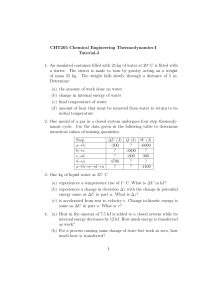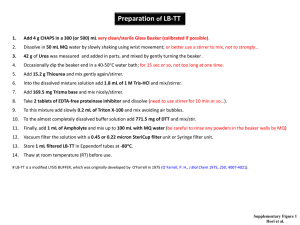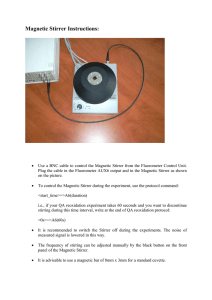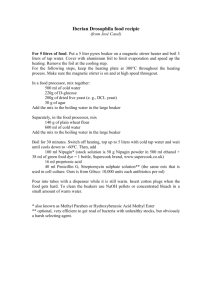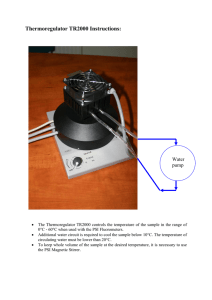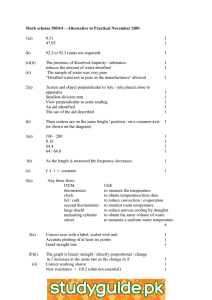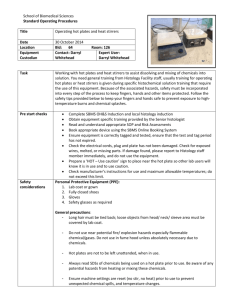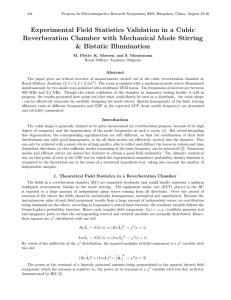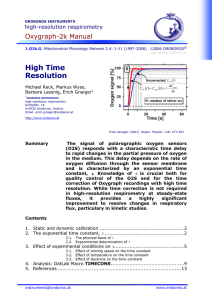Miscibility
advertisement
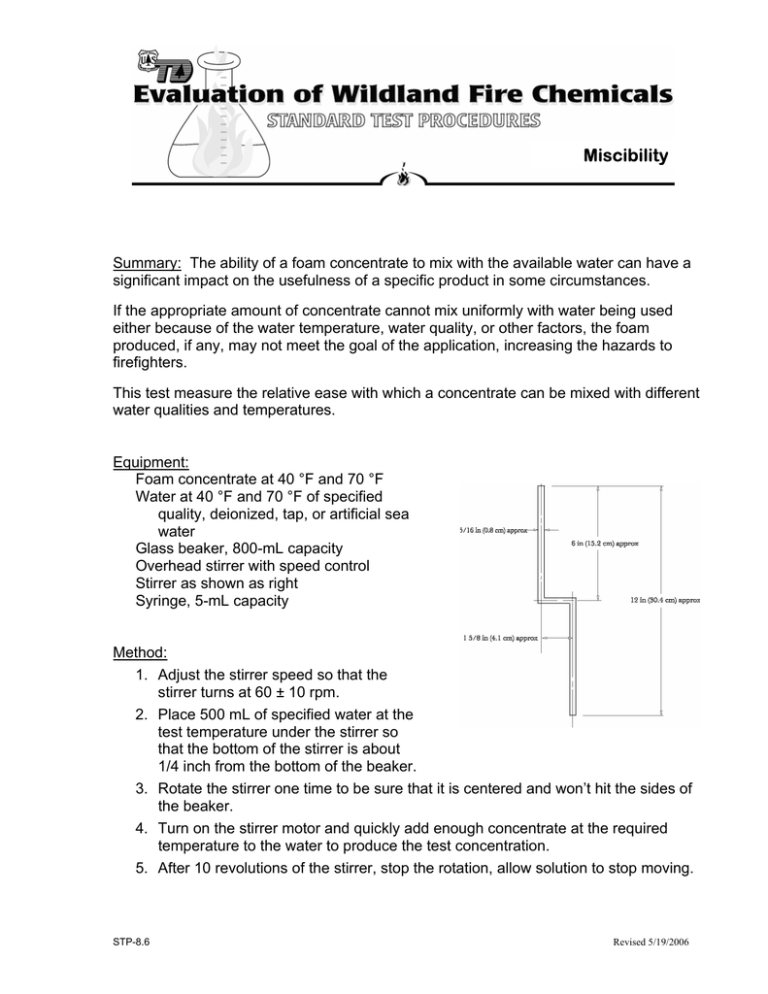
Miscibility Summary: The ability of a foam concentrate to mix with the available water can have a significant impact on the usefulness of a specific product in some circumstances. If the appropriate amount of concentrate cannot mix uniformly with water being used either because of the water temperature, water quality, or other factors, the foam produced, if any, may not meet the goal of the application, increasing the hazards to firefighters. This test measure the relative ease with which a concentrate can be mixed with different water qualities and temperatures. Equipment: Foam concentrate at 40 °F and 70 °F Water at 40 °F and 70 °F of specified quality, deionized, tap, or artificial sea water Glass beaker, 800-mL capacity Overhead stirrer with speed control Stirrer as shown as right Syringe, 5-mL capacity Method: 1. Adjust the stirrer speed so that the stirrer turns at 60 ± 10 rpm. 2. Place 500 mL of specified water at the test temperature under the stirrer so that the bottom of the stirrer is about 1/4 inch from the bottom of the beaker. 3. Rotate the stirrer one time to be sure that it is centered and won’t hit the sides of the beaker. 4. Turn on the stirrer motor and quickly add enough concentrate at the required temperature to the water to produce the test concentration. 5. After 10 revolutions of the stirrer, stop the rotation, allow solution to stop moving. STP-8.6 Revised 5/19/2006 Miscibility 6. Observe the liquid and record the observations; either the solution is homogeneous or not homogeneous. The solution is homogeneous if it is: • Uniform throughout, • Has no visible striations or phases, or is • Uniformly cloudy or milky 7. If the solution is not visually homogeneous, stir for an additional 10 revolutions and observe and record the observations. 8. Repeat steps 5, 6, and 7 until the total number of revolutions equals 100 or until the solution is homogenous, whichever is shorter. 9. If the solution is not homogenous after 100 revolutions, record the test result as “not miscible.” Preparation of artificial sea water: 1. Add the amounts of the chemicals listed below to 95.84 grams of deionized water. Magnesium chloride, hexahydrate 1.10 grams Calcium chloride, dihydrate 0.16 grams Sodium sulfate, anhydrous 0.40 grams Sodium chloride 2.50 grams 2. Prepare as many multiples of the chemical mixture as are required to yield the required volume of water. 3. Stir well until all chemicals are dissolved. STP-8.6 Revised 5/19/2006
